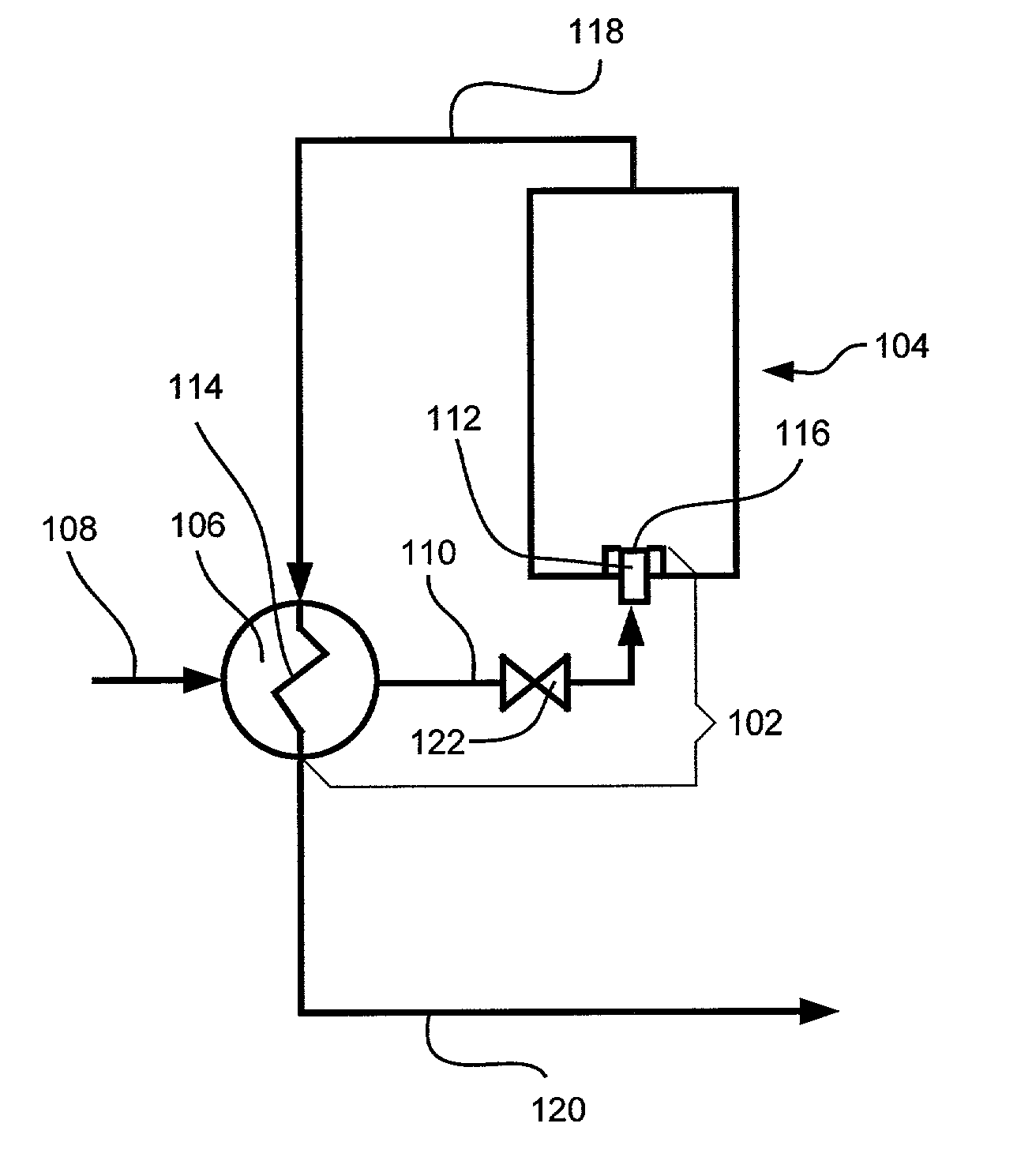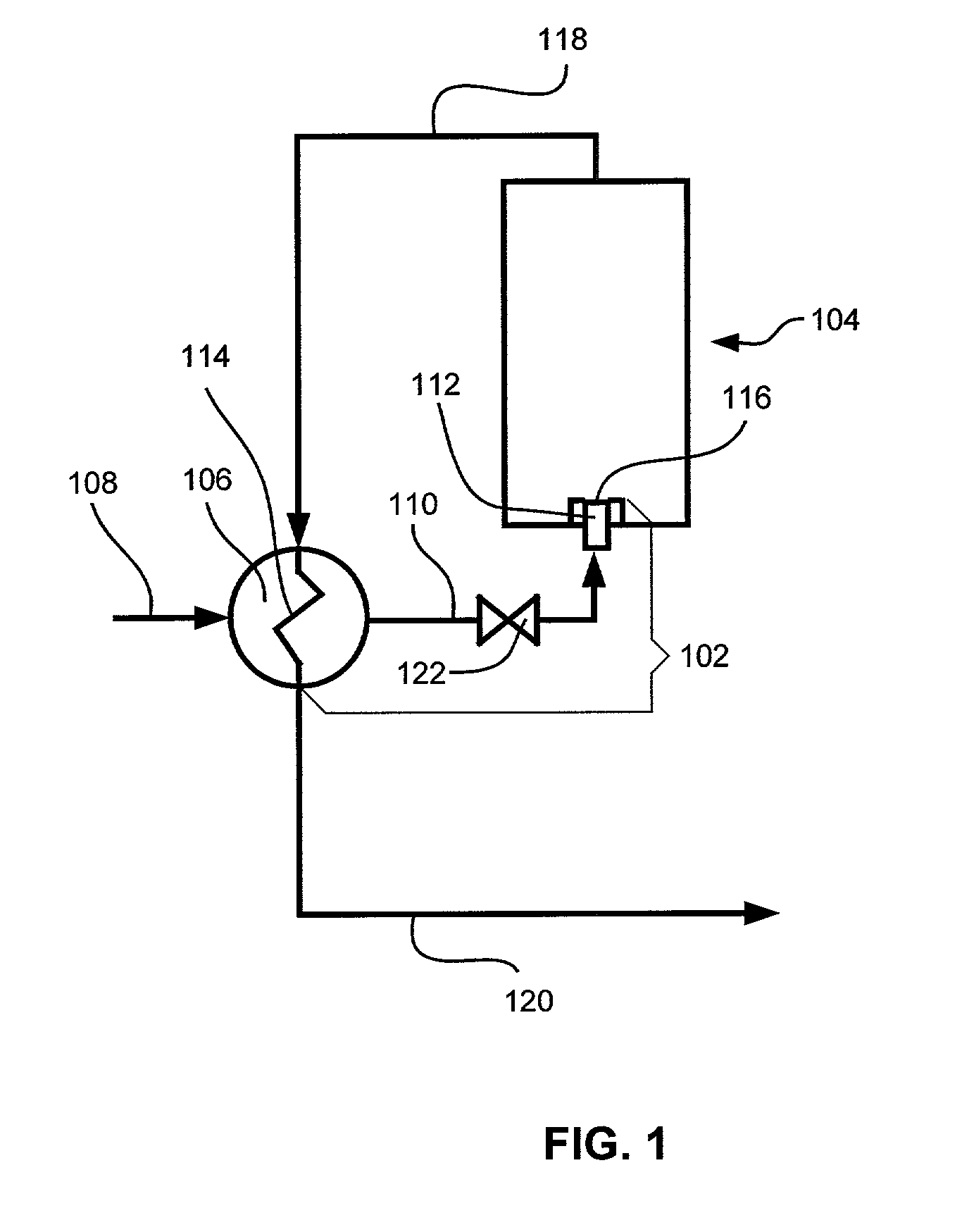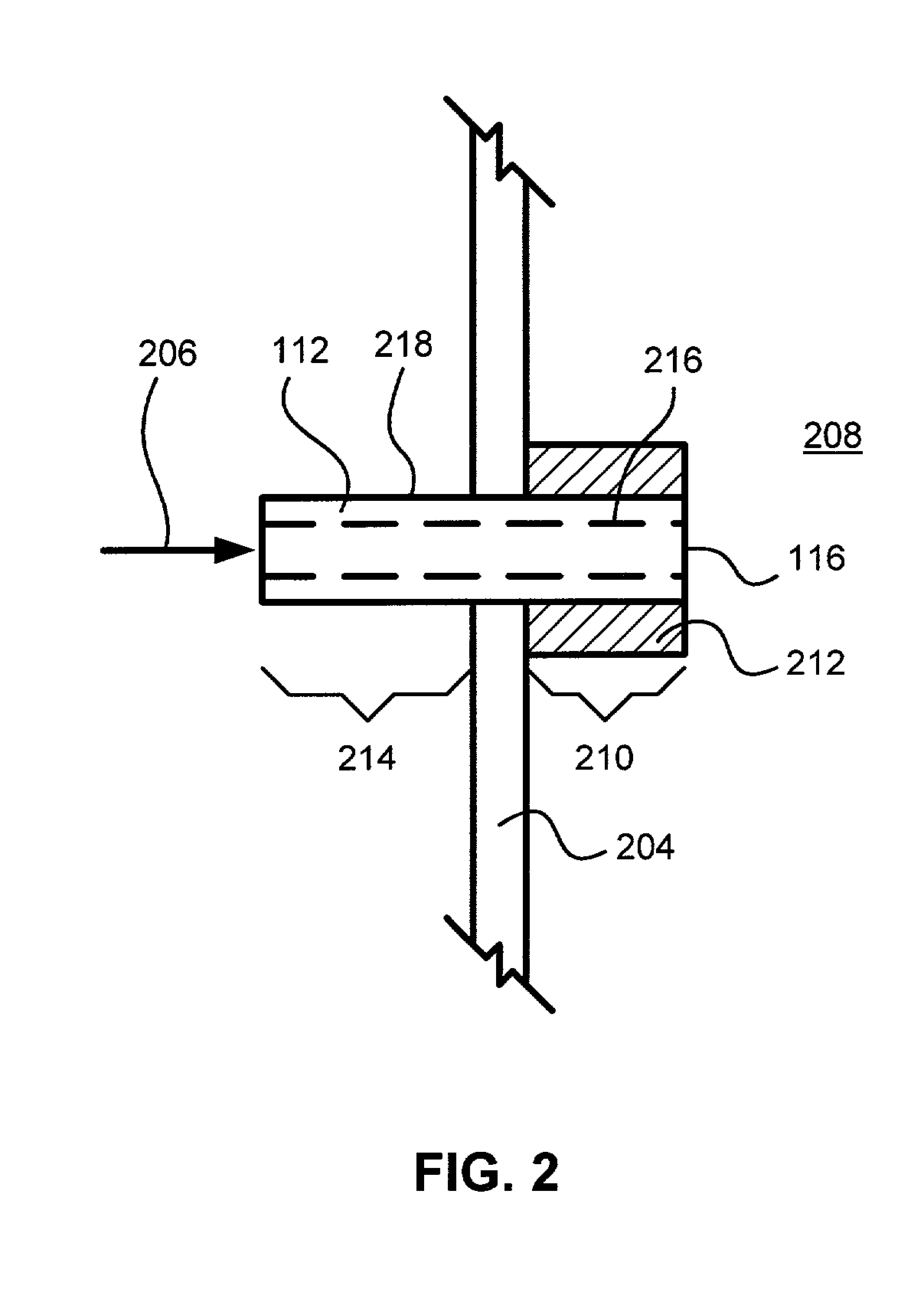Method and apparatus for reducing decomposition byproducts in a methanol to olefin reactor system
a technology of methanol and reactor system, which is applied in the direction of organic chemistry, chemical/physical/physical-chemical processes, chemical/physical/physical-chemical processes, etc., can solve the problems of increasing the cost of producing olefins from petroleum sources, methanol may be converted into undesirable methane and/or other byproducts, and the production of metal catalyzed side reaction byproducts can be reduced or eliminated, and the cost of olefin separation
- Summary
- Abstract
- Description
- Claims
- Application Information
AI Technical Summary
Benefits of technology
Problems solved by technology
Method used
Image
Examples
example
[0068]In order to provide a better understanding of the present invention including representative advantages thereof, the following example is offered. The example compares the reactivity of a methanol feedstock in a stainless steel reactor with a methanol feedstock in a coated reactor at various temperatures.
[0069]All data presented was obtained using a microflow reactor. The microflow reactor used was a No. 316 stainless steel reactor (¼ inch outer diameter) located in a furnace to which vaporized methanol was fed. The vaporized methanol was maintained at 120° C. The methanol conversion reactions were preformed at 25 psig (172 kPag) methanol pressure and at a methanol feed rate of 80 μl / min. The control experiment was performed under identical reaction conditions except that a coated reactor was used. The coated reactor was 1 / 16 inch in diameter and was made of steel coated with a thin layer of fused silica.
[0070]The effluent from the reactor was collected in a 15-sample loop Val...
PUM
| Property | Measurement | Unit |
|---|---|---|
| Temperature | aaaaa | aaaaa |
| Temperature | aaaaa | aaaaa |
| Temperature | aaaaa | aaaaa |
Abstract
Description
Claims
Application Information
 Login to View More
Login to View More - R&D
- Intellectual Property
- Life Sciences
- Materials
- Tech Scout
- Unparalleled Data Quality
- Higher Quality Content
- 60% Fewer Hallucinations
Browse by: Latest US Patents, China's latest patents, Technical Efficacy Thesaurus, Application Domain, Technology Topic, Popular Technical Reports.
© 2025 PatSnap. All rights reserved.Legal|Privacy policy|Modern Slavery Act Transparency Statement|Sitemap|About US| Contact US: help@patsnap.com



